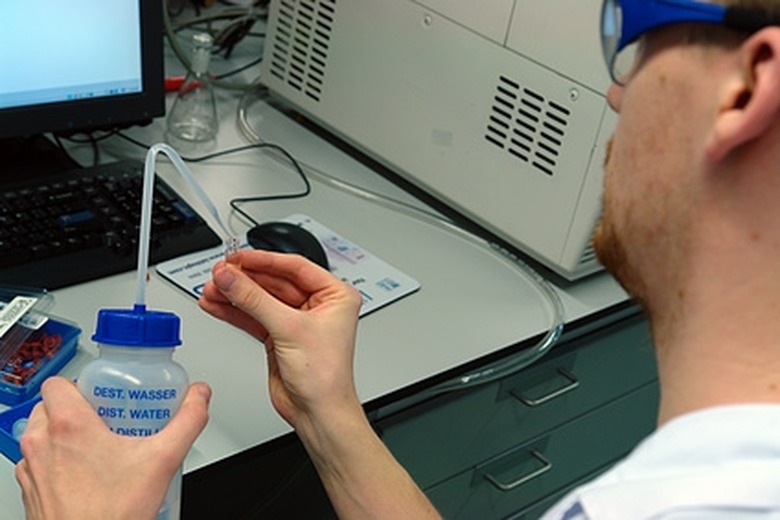What Is A Spectrometer?
A spectrometer is a common tool used by various scientists to determine information about an object or substances through the analysis of its light properties. Unknown compositions broken down into basic elemental components or lights emitted from far away galaxies can be used to determine information about space objects, including their size and speed.
Basic Purpose
Basic Purpose
Spectrometers have a variety of uses in the science industry particularly in astronomy and chemistry. All spectrometers have three basic parts–they produce a spectrum, disperse the spectrum and measure the intensities of lines produced from the spectrum. Every substance and element produces different light frequencies and patterns which are sort of like their own fingerprints. Using this principle, scientists can analyze unknown substances and materials using spectrometers then compare the results to known patterns to determine the composition of the test subject.
History
History
The root of spectrometers dates back to 300 BC when Euclid began work with spherical mirrors. In the late 17th century, Isaac Newton coined the word spectrum to describe the range of colors made by scattering light through a prism. Analyzation and further study of color theory continued progressively and in the early 19th century, the first spectrometers began appearing by various scientists. The earliest spectrometers utilized a small slit and lens that passed light through a prism to refract the light into a spectrum projected through a tube for analysis. Technological advancements have continuously refined this tool with the most recent developments becoming more computer based.
How to Use
How to Use
Spectrometers are fairly easy to set up and use. Generally, the spectrometer is turned on and allowed to heat up completely before use. It is loaded with a known substance and calibrated at a wavelength similar to that of the known substance. Once the machine is calibrated, the test sample is loaded into the machine and a spectrum is determined for the sample. The wavelengths are analyzed and compared to various known readings to determine the composition of the new substance. This process can similarly be done without loading an actual substance into a spectrometer but rather just allowing light to pass through the machine for readings. Astronomers often use this method using light from deep space.
How it Works
How it Works
To accurately determine a spectrum for substances, a gaseous form of the substance must be subjected to light and a spectrum is created. So, when samples are loaded into spectrometers, the high temperature of the machine vaporizes the tiny sample and light is refracted accordingly to the composition of the substance being tested. In the case of using spectrometers for astronomical purposes, incoming wavelengths and frequencies from space are analyzed in a similar fashion to determine the composition of celestial matter.
Usage
Usage
Scientists can use spectrometers to determine the composition of any new discoveries they make whether on Earth or in far distant galaxies. For example, a complex compound substance can be analyzed and the different elemental components can be determined. Also, the use of spectrometry in the medical field is growing in popularity as it can be used to identify contaminants or levels of various substances in the bloodstream to detect possible diseases or unwanted toxins.
Cite This Article
MLA
Whiting, Dyna. "What Is A Spectrometer?" sciencing.com, https://www.sciencing.com/spectrometer-5372347/. 24 April 2017.
APA
Whiting, Dyna. (2017, April 24). What Is A Spectrometer?. sciencing.com. Retrieved from https://www.sciencing.com/spectrometer-5372347/
Chicago
Whiting, Dyna. What Is A Spectrometer? last modified March 24, 2022. https://www.sciencing.com/spectrometer-5372347/
